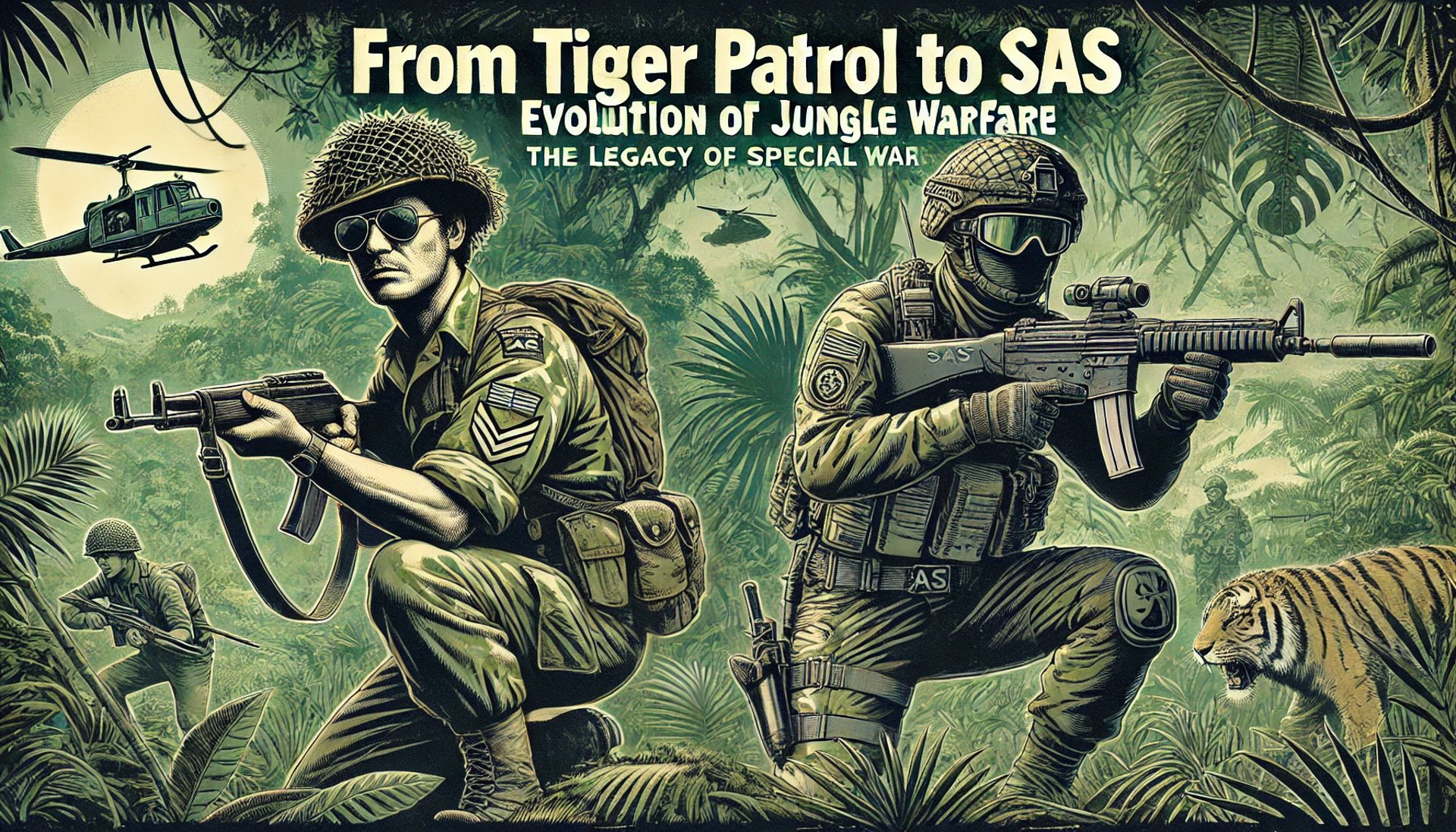
You didn’t come this far to stop
Tiger Patrols –
The Birth of Special Forces Jungle Warfare
Episode 40: Tiger Patrols – The Birth of Special Forces Jungle Warfare
During the Malayan Campaign of World War II, Lieutenant Colonel Ian Stewart introduced the concept of Tiger Patrols—small units trained to conduct ambushes and reconnaissance in the dense jungle environment. While the Tiger Patrols were not widely adopted during the campaign, their tactics laid the foundation for modern special forces operations. These pioneering methods of jungle warfare later inspired elite forces like the Australian Special Air Service (SAS), particularly during their operations in the Vietnam War. This episode explores the evolution of these tactics from the Tiger Patrols to the Australian SAS.
WW2 HISTORYDESCENT INTO HELLIN THEIR FOOTSTEPS BLOG
Toursofwar.com
8/22/20245 min read
Jungle Warfare Innovation
The Concept of Tiger Patrols
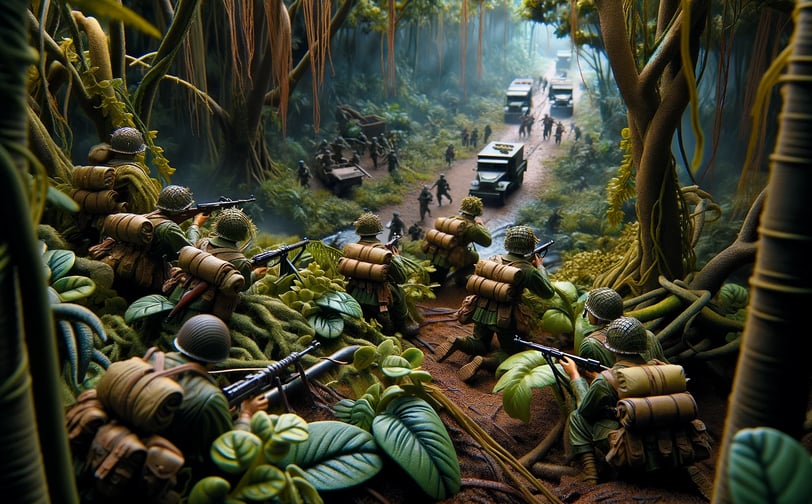

Key Components of Tiger Patrols:
Small Unit Size: 3 to 5 soldiers, ensuring stealth and mobility.
Ambush Tactics: Utilized the jungle terrain for surprise attacks on enemy patrols and supply routes.
Disruption Strategy: Focused on undermining the enemy’s morale by disrupting their control and communication.
Lieutenant Colonel Ian Stewart recognized the need for an unconventional approach to jungle warfare, where traditional tactics would be ineffective against the fast-moving Japanese forces. Thus, he created the Tiger Patrols, small units of 3 to 5 soldiers trained to move silently through the jungle, ambushing enemy patrols and cutting supply lines.


The Tiger Patrols were designed to engage the Japanese forces in guerrilla warfare. However, the lack of widespread adoption of these tactics by the broader British command limited their overall impact on the campaign.
These tactics were ahead of their time, combining jungle expertise with principles of surprise and stealth that would later become hallmarks of modern special forces.
Pioneers in Jungle Training
The Argyle and Sutherland Highlanders
Lieutenant Colonel Ian Stewart quickly recognized that jungle warfare required a completely different approach. He was determined to train his men rigorously for combat in the jungle, which earned his battalion the nickname “Jungle Beasts.” Stewart led his men through challenging exercises, including cross-country jungle marches, ambush scenarios, and survival training.

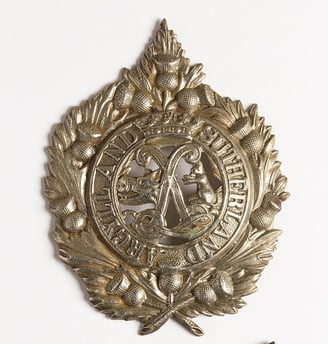
Key Training Focuses:
Cross-Country Movement: Navigating dense jungle terrain.
Live-In Training: Soldiers were required to live in the jungle for extended periods to simulate real conditions.
Ambush Preparation: Learning how to set and execute ambushes effectively in the jungle environment.


While most British battalions were focused on traditional military drills, Stewart understood that jungle warfare required a different set of skills. His men were better prepared for combat in the dense jungle, but unfortunately, his methods were not adopted across the wider British command.


Did You Know?
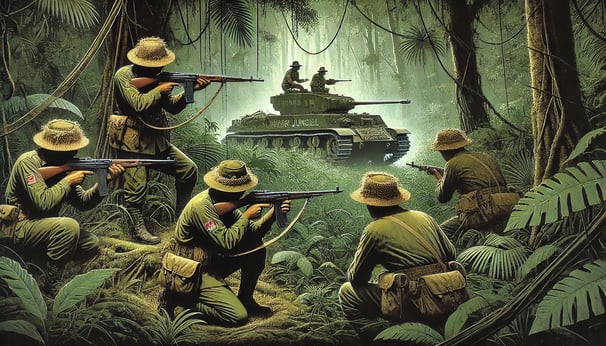

Stewart’s training regime, if adopted across the British forces, would have made a significant difference in the preparedness of troops to face the Japanese in jungle conditions.
From Tiger Patrols to Australian SAS in Vietnam
The SAS Evolution in Jungle Warfare
The tactics introduced by the Tiger Patrols directly influenced the evolution of special forces, particularly the Australian SAS during the Vietnam War. In Vietnam, the Australian SAS refined the principles pioneered by the Tiger Patrols, adapting them for long-range reconnaissance and jungle warfare. The dense jungles of Vietnam were an ideal setting for these tactics, which focused on small-unit ambushes, disruption of enemy logistics, and stealth operations.
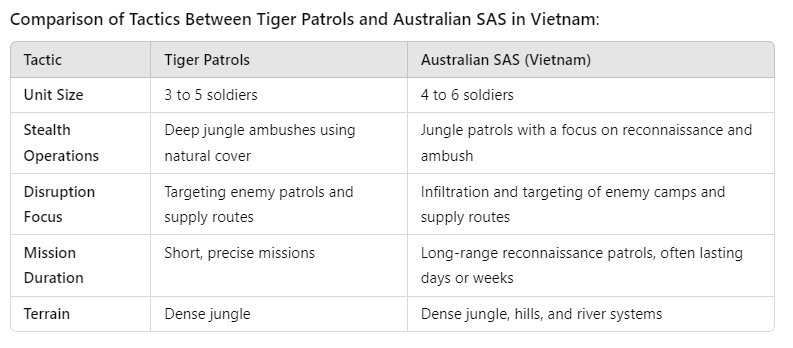



Direct Influence on Modern Jungle Warfare
How Tiger Patrols Inspired Australian SAS Tactics
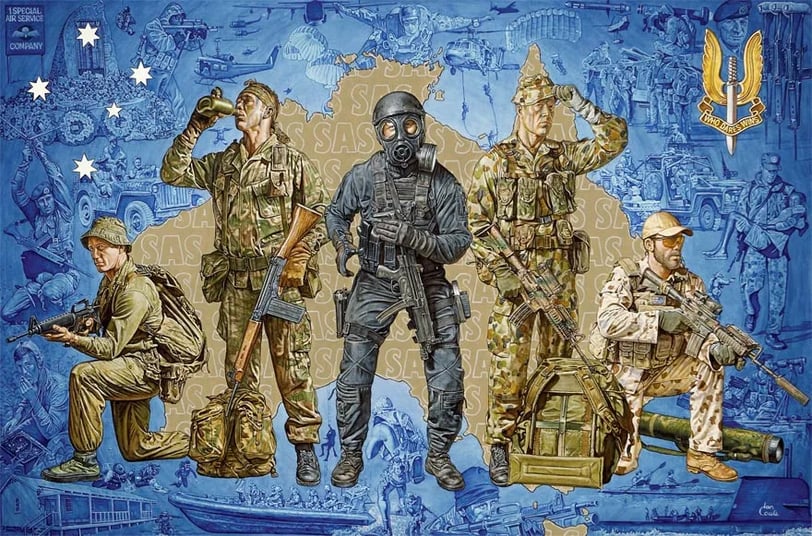

The success of the Australian SAS in Vietnam demonstrated how effective small-unit tactics could be in dense jungle environments. By using stealth and focusing on long-range reconnaissance and ambushes, the Australian SAS carried forward the legacy of the Tiger Patrols, proving that these tactics could be adapted and expanded for modern warfare.
The Tiger Patrols laid the groundwork for what would become the standard for jungle warfare tactics, influencing the Australian SAS during the Vietnam War. The Tiger Patrols’ focus on stealth, ambush, and disruption became core components of the Australian SAS’s operating methods.
Key Influences of Tiger Patrols on Australian SAS:
Small-Unit Operations: Both the Tiger Patrols and the Australian SAS relied on small, highly mobile teams to carry out operations deep behind enemy lines. These units were designed to operate independently, reducing the risk of detection and maximizing the element of surprise.
Ambush and Disruption: The Tiger Patrols’ emphasis on disruption—by ambushing enemy patrols and cutting off supply lines—became a key tactic for the Australian SAS in Vietnam, where they targeted Viet Cong supply routes and command posts.
Stealth and Reconnaissance: The Tiger Patrols pioneered the use of stealth in jungle warfare, a tactic the Australian SAS perfected in Vietnam. The Australian SAS’s long-range reconnaissance patrols required them to remain undetected for days or even weeks, gathering intelligence and positioning themselves for precision strikes on key targets.
The Lasting Impact of Tiger Patrols on Special Forces
Tactical Legacy
The Tiger Patrols' emphasis on stealth, mobility, and ambush has had a lasting influence on modern special forces tactics. These principles, developed in the jungles of Malaya, are now standard in military operations worldwide.
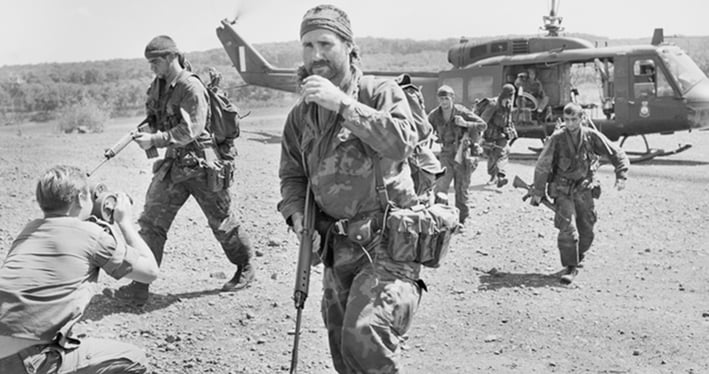

Key Special Forces Tactics Inspired by Tiger Patrols:
Small-Unit Ambushes: Both the Tiger Patrols and modern special forces use small, mobile units to disrupt larger enemy formations.
Stealth and Mobility: Modern special forces still rely on stealth operations to gain the upper hand against enemy forces, a tactic that the Tiger Patrols pioneered.
Disruption of Command and Control: By targeting supply lines and communications, modern special forces weaken the enemy’s logistical and command infrastructure—much like the Tiger Patrols aimed to do.
Conclusion
The Birth of Special Forces Jungle Warfare
The Tiger Patrols were a groundbreaking innovation in jungle warfare, introducing tactics that would form the basis for modern special forces. Their legacy, carried forward by the Australian SAS in Vietnam, shows how small-unit tactics, stealth, and disruption can be applied to devastating effect in the jungle. These principles remain at the heart of special operations to this day, demonstrating the lasting influence of Stewart’s Tiger Patrols on the evolution of military strategy.
How You Can Help
Donations and Sponsorships: We are seeking corporate sponsorships and donations to fund ongoing restoration projects and educational programs. Your support can make a significant difference in maintaining the quality and impact of the museum.
Volunteer Opportunities: If you have expertise or time to offer, consider volunteering with us. There are many ways to get involved, from artifact restoration to educational outreach.
Spreading the Word: Share this blog and our mission with your network. The more people who know about the JEATH War Museum and its significance, the greater the impact we can achieve together.
The St Andrews Research Team is dedicated to preserving the legacy of the Thai-Burma Railway and the memories of those who suffered. We need your support to continue our work. There are several ways you can help:
Join the Cause!
If you or someone you know is interested in supporting this cause, please get in touch.
This is a chance to be part of something truly meaningful and impactful.
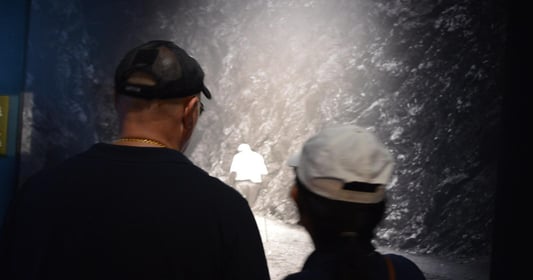

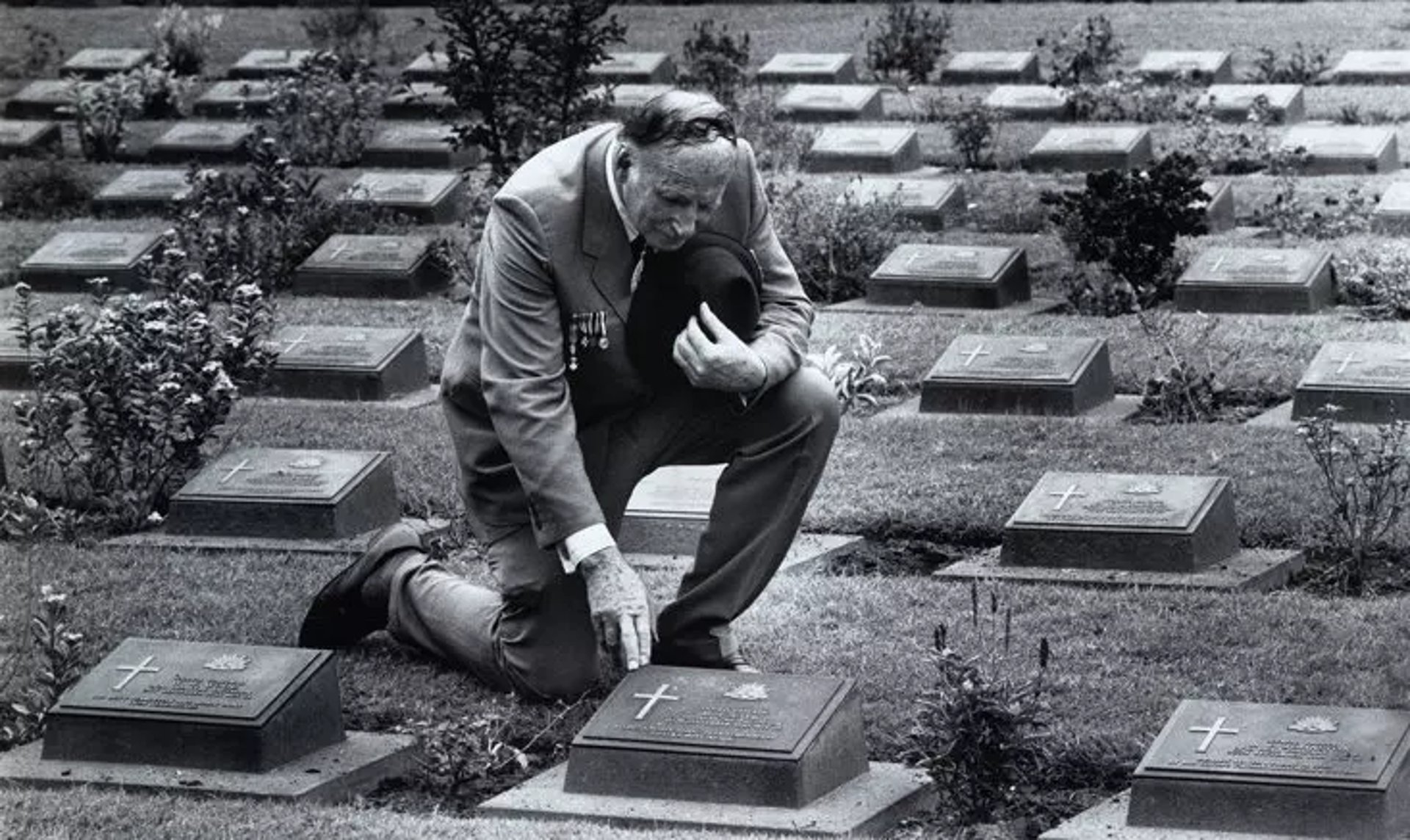
Together, We Can Make a Difference!
This is a veteran-run project, and we need your help to make it happen. Stand with us in honoring the legacy of the POWs and ensuring their stories are never forgotten.
